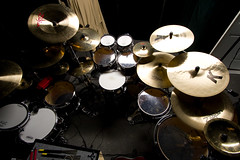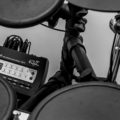Tuning your drum set Second-hand Drums - The Second-Hand Drums Market: Tips for Buying a Good Used Drum Set If you're considering purchasing a drum set, here are some tips for buying a quality used set. Following these suggestions will help ensure you don't waste your money. Take your time: Be patient when choosing a drum set. Carefully assess the drums' overall… is considered one of the most crucial maintenance tasks for a drummer. Even before playing or recording, the drummer needs to ensure that the drum is effectively tuned and ready to sound good. A typical drum kit consists of a bass drum, cymbal, snare, hi-hats, and toms.
When tuning your drum set, you can start by tuning the snare drums. Begin by tuning the top head first. Turn each lug clockwise to increase the tension of the head and to raise the drum pitch. You can also tune one lug and then tune the lug on its opposite side, ideally 180 degrees away. The drums are bound to sound better when you do not tune these lugs in a circular sequence. However, be careful not to tune it too high, as the heads tend to break easily.
While tuning your drum set, test the pitch of each lug by lightly playing about one inch away from the lug with a drumstick. Also, make sure that all lugs have equal pitch. At this point, your snare drum should be tuned.
The next step in tuning your drum set is to tune the toms. Start by tuning the bottom head of each tom-tom. You can then use the same tuning sequence as the snare technique for tuning each lug and then its opposite. After tuning the bottom head, move to the top head. The head is where the pitch is located, so it is important to have an idea of what pitch you want. Tune it to the pitch you desire.
After you have the proper pitch, check each lug pitch so that it matches the others in the same manner as the snare drums.
After tuning your toms, the next step in tuning your drum set is the bass drums. Start by tuning the head first. It is advisable not to spend too much time tuning, as the head does not have much impact on the sound of the drum. After tuning the head, you can begin tuning the lug of the back head in the same way as you tune the toms and snare. You should ensure that your drum is tuned neither too high nor too low. Bass drum sounds depend on the style of music you are playing and how much impact the drum has with the group you play with.
When tuning your drum set, you should first imagine the tones you want to hear, and then learn how to tweak those actual tones from each drum. While tuning your drum set, look carefully at your snare drum and try to determine what factors affect the tonal quality the most.
Notice the square-headed screws around the top and bottom rims of the drum. They are called tension rods or tension screws. They screw into the lugs, which are generally installed permanently on the sides of the shell of the drum. You can tighten or loosen these screws with a tool called a drum key.
A drum key can be purchased at any music store for a dollar or two. Adjustments to the tension screws with a drum key can affect the tension on the drumhead, which can raise or lower the pitch of the drum.
However, tuning your drum set depends more on your ear and the tone you want.
Manuel Marino is a seasoned Senior Producer, Music Composer, and Artist with over a decade of experience. He specializes in branded entertainment across various mediums, including video games, films, and advertising campaigns. With 20+ years as a game music composer, Manuel has worked on numerous platforms, creating diverse orchestral soundtracks. HIRE ME


 Manuel is a passionate, driven, and techsavvy AV technician,
Manuel is a passionate, driven, and techsavvy AV technician, 





